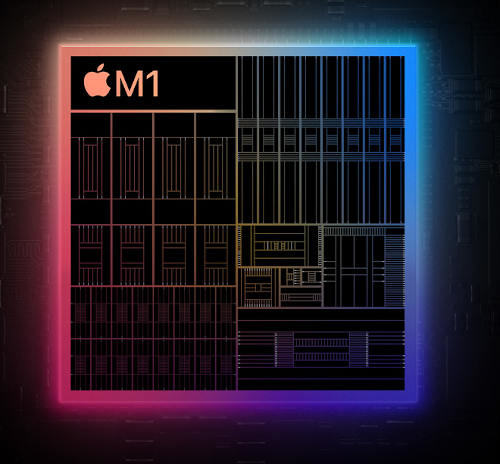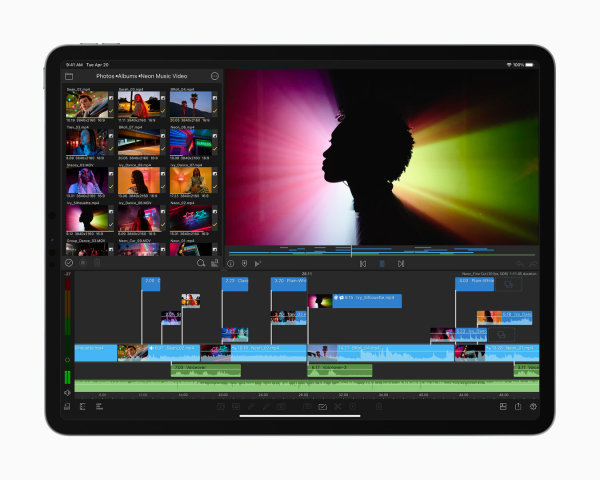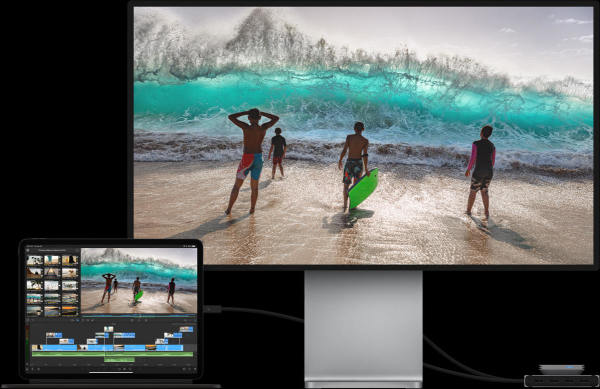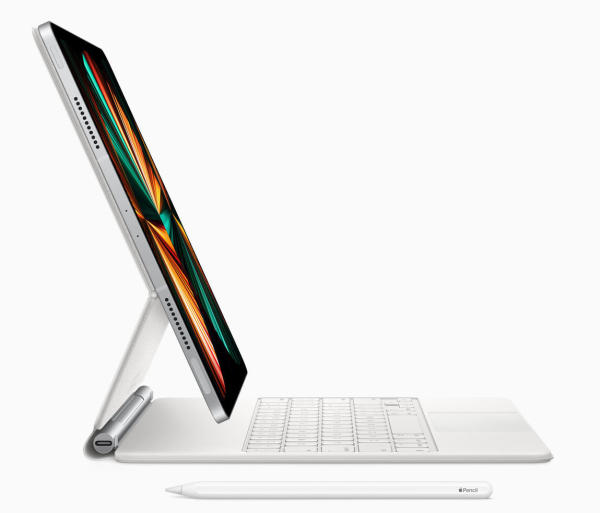[14:49 Wed,21.April 2021 by Thomas Richter] |
In addition to the new  New iPad Pros New: M1 instead of A12Z. The version of the M1 used in the new iPad Pros is apparently the same one used  M1 SoC More performance thanks to M1. Compared to the A12Z Bionic chip in the last (2020s) generation iPad Pros, the M1 in the new models is said to offer up to 50 percent faster CPU performance or up to 40 percent better GPU performance. Apple doesn&t compare the performance of the different M1 models with each other, but since they all use the same chip, the only difference in their performance is the maximum amount of power that can be cooled - that&s why the actively cooled M1 models like the MacBook Pro, Mac mini, and iMac should consistently deliver more performance than the passively cooled iPad Pro and MacBook Air models. Liquid Retina XDR Display with Mini LEDs. And as rumors have suggested, the new Liquid Retina XDR display used in the iPad Pro 12.9" actually uses (a total of 10,000) mini-LEDs as backlighting, which, thanks to 2,596 local dimming zones, not only enables an extremely high contrast ratio of 1,000,000:1 and a maximum brightness of 1,000 nits in full-screen mode with peak values of 1,600 nits (HDR) but also a very good display of high-contrast Dolby Vision and HDR content. The display of the 11" model on the other hand does not use mini-LEDs and only achieves a peak brightness of 600 nits.  Video editing via iPad Pro The panel of the 12.9" model has a resolution of 2,732 x 2,048 pixels, that of the 11" model a resolution of 2,388 x 1,668 pixels - adaptive refresh rates of up to 120 Hz are supported. For professional work with images, the coverage of the DCI-P3 color space by the new display is also interesting. Other innovations: 5G, eSIM, Thunderbolt / USB 4. Apple has also upgraded other components in the new iPad Pros: the LTE versions now also support the 5G standard and the use of eSIMs (like the new iPhones). For the first time, Thunderbolt / USB 4 is now available as an interface, which with up to 40 Gbit/s provides 4 times more bandwidth via cable than the previous iPad Pro - for example, for connecting a 6K Pro Display XDR display or other peripherals equipped with Thunderbolt ports. The Thunderbolt / USB 4 port is backwards compatible with Thunderbolt 3, USB 3.1 Gen2, among others, and can also be used to charge the device.  6K display via Thunderbolt on iPad Pro. Camera upgrade: ultra-wide angle, LiDAR and follow mode. Also new is the 12-megapixel ultra-wide-angle front-facing camera, as well as the TrueDepth camera system&s Center Stage dubbed virtual follow mode, developed specifically for video calls, which uses the new front-facing camera&s wider field of view and the M1&s machine learning capabilities to automatically follow users around the frame via digital zoom & pan & tilt & tracking to get an ideal frame in which users are centered. This new mode can be used not only in Apple&s FaceTime but also in other video conferencing/video telephony tools like Zoom or Microsoft Teams. The ISP and Neural Engine in the M1 open up even more possibilities for the camera system and bring support for Smart HDR 3 to the iPad Pro for the first time. In addition, the new LiDAR sensor, together with the ISP, enables fast and precise focus even in low-light conditions. Video continues to be captured in a choice of 4K at 24 fps, 25 fps, 30 fps or 60 fps (wide angle), 1080p HD at 25 fps, 30 fps or 60 fps, and 720p HD at 30 fps. Cinematic video stabilization can be enabled when shooting in at 1080p and 720p.  iPad Pro with Magic Keyboard iPadOS 14.5. The new iPadOS 14.5 will be available to iPad users starting next week and comes with additional enhancements, including expanded voice support for Apple Pencil features like doodling and Smart Selection, new emojis, support for the latest game controllers, and the ability to share song lyrics and see the most popular songs curated by city around the world with Apple Music. The new iPad Pro models: pricing and availability. The new 11" and 12.9" iPad Pro will be produced in Silver and Space Gray colors and can be ordered online starting Friday, April 30 and will be available in the second half of May. As always, Apple makes the storage upgrade expensive: for example, the WLAN version of the iPad Pro 12.9" with 128 GB costs around 1,200 euros, a storage upgrade to 256 GB then costs around 110 euros, 512 GB around 330 euros, 1 TB around 770 euros and 2 TB around 1,210 euros (the latter two models, however, also have 8 GB more RAM). The prices in detail: - The 11" iPad Pro starts at 879 for the Wi-Fi model and 1,049 for the Wi-Fi + Cellular model; the 12.9" iPad Pro starts at 1,199 (Wi-Fi model) and 1,369 (Wi-Fi + Cellular model). As always, there are also special educational prices for currently enrolled and admitted students and their parents, as well as faculty, staff and homeschooling teachers at all grade levels. - The second-generation Apple Pencil costs ; the Magic Keyboard for the new iPad Pro in black and white costs for the 11-inch iPad Pro and for the 12.9-inch iPad Pro. - The Smart Keyboard Folio for the new iPad Pro costs 199 euros for the 11" iPad Pro and 219 euros for the 12.9" iPad Pro available. The Smart Folio for the new iPad Pro comes in five colors and costs 89 euros for the 11" iPad Pro and 109 euros for the 12.9" iPad Pro. deutsche Version dieser Seite: Neue Apple iPad Pros mit M1, Thunderbolt 4 und Mini-LED Display mit Local Dimming Zonen |





